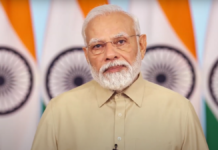The Central Government led by Prime Minister Narendra Modi has been acting upon a predominant vision towards revamping, enhancing, and radically transforming the Indian healthcare sector with a series of measures that are progressive and highly innovative. The NDA Government has worked towards a long-term blueprint for changing present standards of medical care and education and the series of latest measures are the outcome of discussions, deliberations, studies, and analysis for a sustained duration. In fact, these measures are no flash in the pan; they were in the works for quite some time now.
The NMC (National Medical Commission) was actively implemented from the 25th of September, 2020 although it had its genesis in 2019. It repeals the Indian Medical Council Act of 1956 and dissolves all bodies like the Board of Governors and Medical Council of India. The NMC will work to institutionalize radical reforms in medical education. The National Medical Commission Act of 2019 has already been passed in both Houses of Parliament.

Key Measures Implemented under NMC
- Dr. Suresh Chandra Sharma (ex-Department Head, ENT, AIIMS) is the NMC Chairman with a 3-year tenure.
- Dr. Rakesh Kumar Vats (ex-Secretary General, Board of Governors, MCI) will be the Secretary of the NMC for 3 years.
- The NMC will have 22 part-time members and 10 ex-officio members who will be appointed by the Central Government.
- Members will be declaring their assets while joining and demitting their positions for greater transparency. The Chairperson/members will not be accepting employment for two years after demitting office in any private medical institution which has been dealt indirectly/directly by him/her.
- The Act proposes new systems of medical education with enhancement of access to affordable and high-quality medical education and availability of adequate professionals in the medical profession while promoting universal and equitable systems of healthcare.
- It also promotes national health objectives while encouraging medical professionals to adapt to the latest medical technologies and research while contributing towards the same as well.
- It seeks to transparently assess and improve medical institutions and enable maintenance of an India-wide medical register while offering a suitable mechanism for redressal of grievances.
- The NMC will be framing relevant policies for regulation of medical professionals and institutions.
- It will ensure adherence to the regulations by the State Medical Councils while assessing healthcare linked requirements across infrastructure and human resources.
- It will frame policies for determining fees for up to 50% of seats across deemed universities and private medical institutions under the aegis of the bill.
- It will regulate and coordinate activities of four key boards. Every board will have a president and four other members. These will be the Under-Graduate Medical Education Board, Medical Assessment and Rating Board, Post-Graduate Medical Education Board, and Ethics and Medical Registration Board.
- Guidelines, recognition standards, curriculum, and other aspects will be formulated by the PGMEB and UGMEB Boards. MARB can impose monetary penalties on institutions not adhering to minimum standards.
- Permissions will be given for setting up new medical colleges, post-graduate courses, or increasing seats.
- EMRB will maintain the national register of licensed medical practitioners under professional conduct guidelines. Those in the register will only have permission for legally practicing medicine.
- Uniform NEET will be held for admission to PG and UG medical education. The National Exit Test will be a common final-year UG examination for students passing out from medical institutions to get practice licenses and this will also serve the purpose for admission to PG courses. This will be called NEXT.
- Students can obtain admission to all leading institutions including PGI Chandigarh, AIIMS, and JIPMER through a single counseling system.
- NEXT examination can be attempted multiple times without any limits.
- NMC Act will regulate fees and charges for 50% private colleges and deemed universities.
NNMC Bill unveiled for public perusal
The official notification has been released on the NNMC (National Nursing and Midwifery Commission) Bill for the general public, informing them that it will be finalized by the Ministry of Health and Family Welfare while repealing the Indian Nursing Council Act, 1947, in another radical and progressive reform measure. The draft bill has been attached for comments from the public and all other stakeholders. These can be sent through mail by the 6th of December, 2020, at the id given which is nnmcbill-mohfw@nic.in.
The key features of the bill include the following:
- The NNMC proposes maintenance of State and Central registers, assessment of institutions, adoption of latest advancements, a system where R&D of advancements becomes smoother, and maintenance/regulation of educational standards in the field.
- It will regulate and ensure the maintenance of services provided by Midwifery and Nursing professionals.
- Chapter I talks about the key principles, responsibilities, roles, duties, and list of roles. The Board is a Nursing and Maternity Assessment Board under Section 20 along with being a Measurement Board. Nursing practices are also clearly defined likewise along with the functions of registered nurses.
- Chapter II is about the Commission and its constitution, talking about the standard mark, corporate nature, power for seizing, acquiring, and disposing off property and the head office to be situated at Delhi. The commission will have a Chairperson, Additional Government of India Secretary, Department of Health and Family Welfare, Government of India Nurse Advisor, Representative from Defense Department, Directorate General of Health Services representative, representative of Indian Medical Research, one from National Medical Commission, five people from leading institutions, five from nursing colleges, one from all 6 constituencies of the State Commission, 12 prominent nursing members and two each from State-designated governments, 8 members of at least one nurse/midwife in every area appointed by Government and one individual representing relief center as designated by the Government.
- Tenure of all members will be maximum of 4 years without any eligibility for re-election or extension.
- Chapter II talks about the Independent Board to be set up by the Government under the aegis of the Commission. Every board will have a president and two full-time members along with four part-time members.
- Chapter IV states how all countries should have their Nursing and Midwifery Commission within a year of commencement for this Act. The State Commission will have responsibilities for arranging the standards of education and service delivery. The Ethics and Midwifery Ethics and Registration Board will tackle the grievances of misconduct.
- Chapter V talks of registration and the board will regulate the same. The Central Register will be a public database of records.
- Chapter VI talks about National Examination, i.e. the entrance for admission into UG Nursing courses. This will apply to all institutions and held in English and other languages. The Commission will hold responsibility for holding examinations and counseling. Registration will be done via NEXT (National Exit Test).
- Chapter VII deals with the recognition of qualifications for nursing and midwifery granted by Indian institutions. Applications will be scrutinized by the boards and recognize the same within 3 months.
- Chapter VIII deals with the Nursing and Midwifery Advisory Council which will have a chairperson, UGC Chairman, every Commission member, director of the National Assessment and Accreditation Council, and a member from every State nominated by State Government or Ministry of Home Affairs along with one member from every State nominated by the respective State Commissions.
- Chapter IX talks of Grants, Audits, and Accounts and the latter has to be maintained suitably by the C/omission. Reports in this regard will be placed by the Central Government before the Houses of Parliament.
- Chapter X covers various aspects including the regulatory framework, display of all information on the online website, and Section 55 which states that post the notification of this bill, the Indian Nursing Council Act, 1947, will be repealed and subsequently dissolved.
In this manner, the Narendra Modi led Central Government is acting upon its innovative outlook towards radically reforming Indian healthcare education, resource availability, infrastructure, and nursing. The Government is implementing measures which were in the pipeline ever since its election to the corridors of power and these progressive steps are part of the pioneering blueprint to completely transform the Indian healthcare sector with a view towards making it more efficient, robust, and transparent for every stakeholder.












